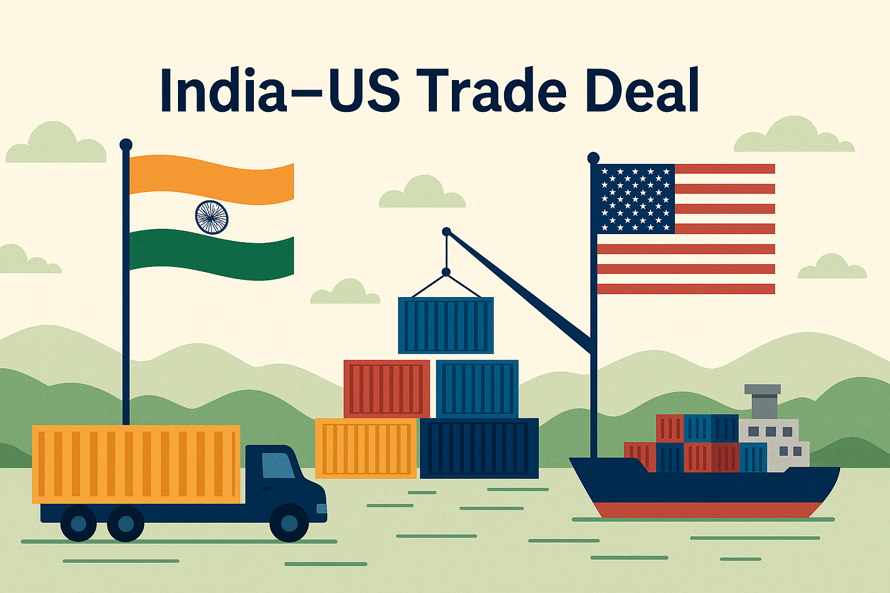
A Deal at the Crossroads: What’s Happening?
India and the United States are on the brink of a new trade agreement. The talks—years in the making—have picked up steam ahead of a critical July 9 deadline. If no deal is reached, the U.S. could reimpose a steep 26% tariff on Indian goods starting August 1.
The stakes are high. India is the U.S.’s ninth-largest trading partner, and the U.S. is India’s top export market. In 2024, goods trade between the two hit $129 billion, with India enjoying a $45.7 billion surplus.
Both countries hope this deal can be a stepping stone to “Mission 500″—a goal to grow trade to $500 billion by 2030.
Key Roadblocks: What’s Holding the Deal Back?
1. Agriculture and GM Crops
The biggest sticking point? Agriculture. The U.S. wants greater market access for products like almonds, dairy, and genetically modified (GM) crops. But India is holding firm.
India’s government says opening its agricultural sector to subsidized U.S. imports could harm 700 million farmers and threaten food security. Cultural concerns also play a role—especially around dairy and GM foods.
To compromise, India may allow some U.S. goods under strict “GM-free” certifications.
2. Tariffs and Trade Pressure
The U.S. already has a 10% base tariff on Indian goods—and it’s threatening to reintroduce a suspended 26% tariff if no mini-deal is signed soon.
India wants full relief from this added duty. But so far, the U.S. is using the threat as a bargaining chip.
3. Intellectual Property Rights (IPR)
Another major issue is IPR enforcement. The U.S. wants stronger protections—especially for pharmaceutical patents. India, a global hub for affordable generics, has pushed back, citing public health and affordability.
What’s in the “Mini-Deal”?
The current agreement being negotiated is limited in scope—focusing mainly on goods, and leaving out services, agriculture, and tech for now.
Some expected highlights:
- Possible tariff relief for Indian textiles, gems, leather, and electronics
- Procurement of U.S. energy and industrial goods by India
- Delayed or reduced U.S. tariffs, avoiding the 26% hike—for now
Why This Deal Matters
A well-balanced trade agreement could:
- Boost Indian exports by 64% over 10 years
- Add 0.6% to India’s GDP
- Create jobs in labor-heavy sectors like apparel and footwear
But if talks fail, India could lose one-third of its direct exports to the U.S., and GDP could dip by 0.7%.
This deal also sets the tone for how both countries approach bigger trade issues—like digital trade, tech rules, and future services agreements.
What’s Next?
The July 9 deadline is key. If a deal isn’t reached, expect tariffs to spike in August. Even if a mini-deal is struck, the toughest issues—like agriculture and IPR—will still need to be tackled in later phases.
This negotiation isn’t just about tariffs. It’s about trust, long-term strategy, and shaping global trade norms in a world turning inward.
Key Takeaways
- The India–US trade talks are at a critical stage, with steep tariffs hanging in the balance.
- Major sticking points include agriculture, GM crops, and intellectual property rights.
- A limited “mini-deal” may be reached soon—but a full trade pact will take longer.
- The economic impact could be huge, either way—especially for labor-intensive industries in India.
- Strategic patience and mutual respect will be key to building a lasting partnership.




